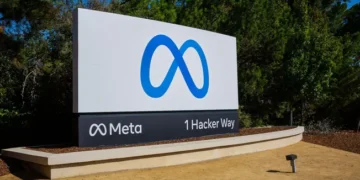- Pinterest this week reported its slowest revenue growth in two years as management of the social media company described the strengths and weaknesses of its advertising business. Its second-quarter revenue rose 9% from a year earlier to $666 million, though growth in the U.S. was slower with a 7% gain to $542 million, according to a regulatory filing.
- Larger retail and consumer packaged goods (CPG) companies remained as some of Pinterest’s most significant advertisers in their strategies to be discovered by the company’s user base, CFO Todd Morgenfeld said in a conference call with analysts. More than 90% of searches on the platform don’t mention a specific brand, an indication that consumers want to see a selection of different products in search results.
- Pinterest’s monthly active users (MAUs) slipped by 5% from the prior year to end the quarter at 433 million as fewer consumers visited its website. However, its app usage grew 8% worldwide, which is significant for a company that generates 80% of its revenue and impressions through mobile devices, Morgenfeld said.
Pinterest this week became the latest company to report lower growth or declines in revenue as economic uncertainties dampen demand for advertising. Meta Platforms, the owner of Facebook and Instagram, last week said revenue declined for the first time in its history, slumping 1% from the prior year to $28.8 billion in the second quarter. While Snap’s revenue climbed 13% to $1.11 billion for the comparable period, the result was less than what analysts had estimated for the owner of Snapchat. Twitter’s revenue slipped 1% to $1.18 billion with the company facing added uncertainties as billionaire Elon Musk halted his $44 billion takeover bid.
Pinterest said user growth was hampered after Google in November changed its search algorithm, making it more difficult for consumers to find content on Pinterest’s website. Pinterest also is among the social media companies to see growing competition from video apps such as TikTok.
The lackluster digital advertising market contrasts with the heady growth that social media companies experienced two years ago, when they provided a way for many consumers to stay in touch with the outside world amid pandemic fears. As people return to their pre-pandemic habits, in what Pinterest describes as the “pandemic unwind,” they’re now grappling with diminished spending power as the prices for goods including food and energy rise faster than incomes.
Those pressures have clouded the outlook for the second half of the year, which includes the key back-to-school and holiday shopping seasons. Pinterest estimated that its yearly growth rate during the current quarter will be in the mid-single digits.
“We’re growing slightly faster quarter to date, but many of our advertising partners, especially larger retailers, are experiencing supply chain issues, inflation and weakening consumer demand,” Morgenfeld said. “These conditions are weighing on advertisers’ ability to spend and our best signals of future performance suggests a slowdown from the growth rate we saw in July.”
Read the full article here














